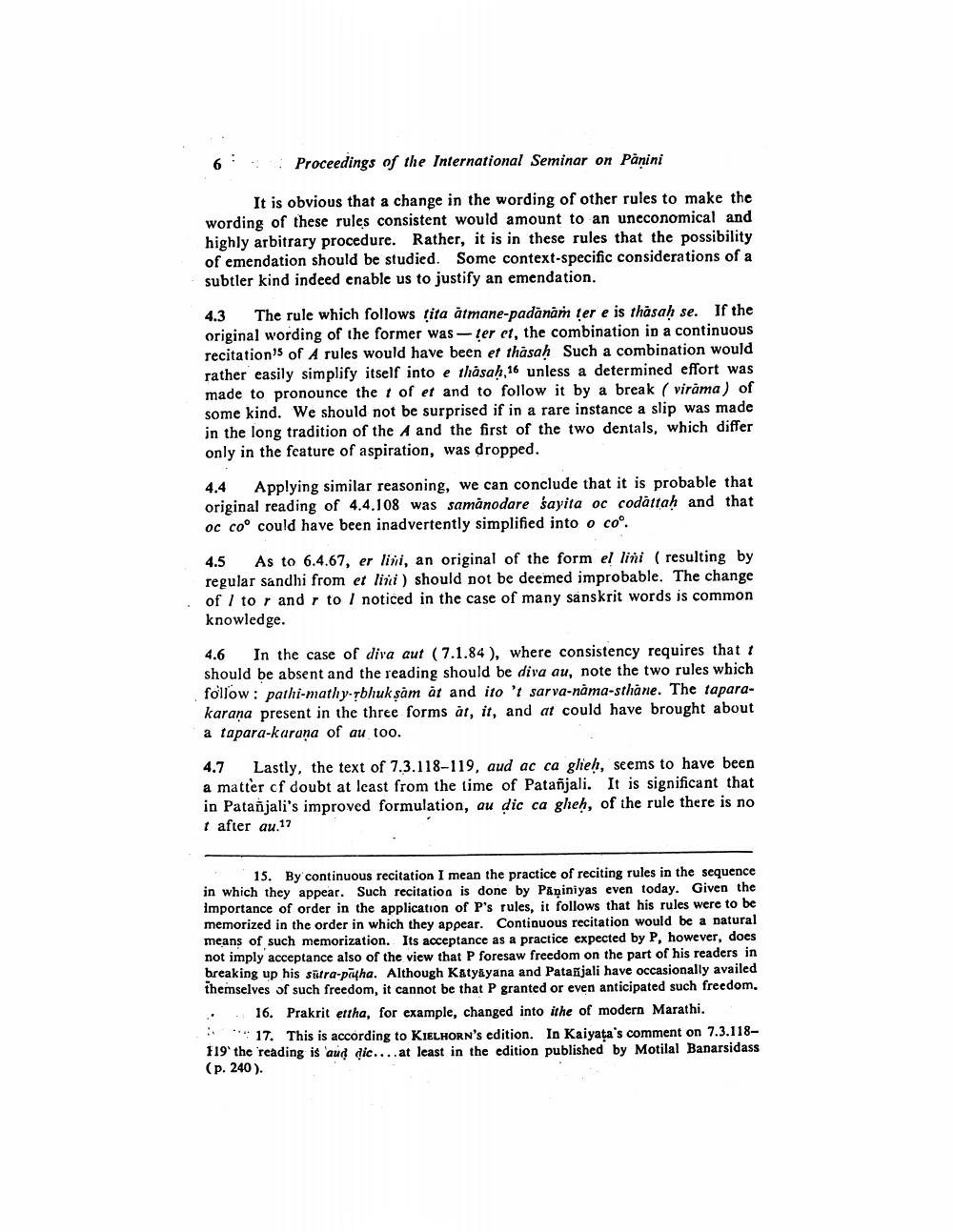________________
6
Proceedings of the International Seminar on Panini
It is obvious that a change in the wording of other rules to make the wording of these rules consistent would amount to an uneconomical and highly arbitrary procedure. Rather, it is in these rules that the possibility of emendation should be studied. Some context-specific considerations of a subtler kind indeed enable us to justify an emendation.
4.3 The rule which follows tita atmane-padānam ter e is thasah se. If the original wording of the former was-ter et, the combination in a continuous recitations of A rules would have been ef thasah Such a combination would rather easily simplify itself into e thasaḥ 16 unless a determined effort was made to pronounce the 1 of et and to follow it by a break ( virama) of some kind. We should not be surprised if in a rare instance a slip was made in the long tradition of the A and the first of the two dentals, which differ only in the feature of aspiration, was dropped.
4.4 Applying similar reasoning, we can conclude that it is probable that original reading of 4.4.108 was samanodare sayita oc codattah and that oc co° could have been inadvertently simplified into o coo.
4.5 As to 6.4.67, er lini, an original of the form el lini ( resulting by regular sandhi from et lini) should not be deemed improbable. The change of / tor and r to I noticed in the case of many sanskrit words is common knowledge.
4.6 In the case of dira aut (7.1.84), where consistency requires that t should be absent and the reading should be diva au, note the two rules which follow: pathi-mathy-rbhuk såm åt and ito 't sarva-nama-sthane. The taparakarana present in the three forms at, it, and at could have brought about a tapara-karana of au too.
4.7 Lastly, the text of 7.3.118-119, aud ac ca ghieh, seems to have been a matter of doubt at least from the time of Patanjali. It is significant that in Patañjali's improved formulation, au dic ca gheh, of the rule there is no 1 after au.17
15. By continuous recitation I mean the practice of reciting rules in the sequence in which they appear. Such recitation is done by Påniniyas even today. Given the importance of order in the application of P's rules, it follows that his rules were to be memorized in the order in which they appear. Continuous recitation would be a natural means of such memorization. Its acceptance as a practice expected by P, however, docs not imply acceptance also of the view that P foresaw freedom on the part of his readers in breaking up his sintra-patha. Although Katyayana and Patanjali have occasionally availed themselves of such freedom, it cannot be that P granted or even anticipated such freedom. .. 16. Prakrit ettha, for example, changed into ithe of modern Marathi.
17. This is according to KIELHORN's edition. In Kaiyața's comment on 7.3.118119' the reading is 'aud dic.... at least in the edition published by Motilal Banarsidass (p. 240 ).




